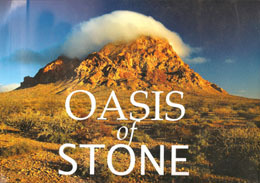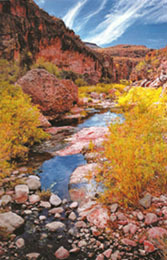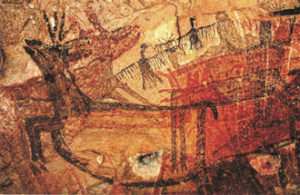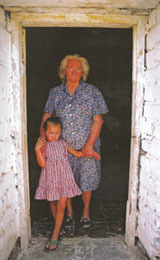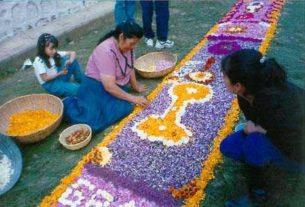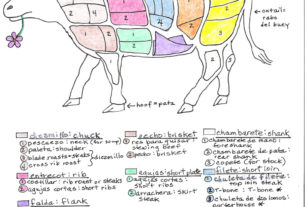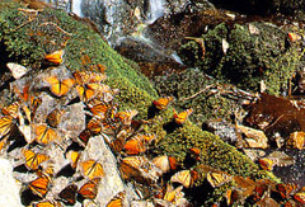Good Reading
Although the Baja coast has attracted thousands of visitors, among them some fine photographers, few have really journeyed to the interior
This exquisite coffee table book is a collaboration between two friends, both of whom are award-winning artists: photographer Miguel Angel de la Cueva and essayist (and poet and musician) Bruce Berger.
Several books by Bruce Berger already grace the rustic shelves of this tiny office I have here in southern Mexico: The Telling Distance, which won the Western States Book Award; Almost an Island, based on Berger’s three decades of experiences in Baja California; and Facing the Music, a volume of poetry. All of these are worth chasing down and adding to your collection.
Like Bruce Berger, Miguel Angel de la Cueva has been in love with Baja California a long time, documenting the land and its cultural heritage. He is also the founder of Planeta Península, which is dedicated to “advancing the understanding and protection of Baja California Sur’s natural habitats and cultural tradition.”
Oasis of Stone, then, is a fortunate coming together of two talents, both of which are fascinated by “the intersection of nature and culture in desert environments.”
In the Foreword, the photographer tells us that “it is in the desert that we can rediscover our sense of awe….” Certainly all genuine art moves us toward a state of “awe,” and in looking at these photographs and reading this text, I feel this happening inside of me… something not completely definable nudging me off a too-civilized center. Miguel Angel de la Cueva believes that “In our daily lives we have traded the marvelous for the commercial, the world’s eloquence for mere comfort, and fail to understand the source of our alienation, our sadness.”
The text itself, by Bruce Berger, is in four sections: Rock that Flows, A Stroll through the Thorns, Creatures of Mirage, and The Newcomer.
Rock that Flows is a geological account, “so seemingly arbitrary in its wandering plot, its unlikely developments.” Furthermore, “the prominence of its generating forces has kept plain what is everywhere the case: that nature is the source of our lives, the weave of our flesh, the limb we sit on.”
Although the Baja coast has attracted thousands of visitors, among them some fine photographers, few have really journeyed to the interior of the Baja, which is the focus of Oasis in Stone. In the second section, A Stroll through the Stone, we join the writer and photographer for a desert walk, where we also are struck by the vegetation, the “menagerie of forms” that burst forth on the desert… from the “tiny pincushion cactus, the height of a human thumb,” to the cardón, “which can weigh up to ten tons and reach a height of twenty meters.”
“The scarcity of water,” Berger writes, “has the ironic effect of making the plants more visible, rather than less,” but animals “disperse like sand.” Creatures of Mirage introduces us to the animals of the Baja – the jackrabbit, the coyote, the squirrel, the pronghorn antelope (the fastest animal in the Western Hemisphere) and mountain sheep – but “the larger the animal is, the more invisible it tends to be.” Baja is also home to 175 bird species, including the cactus wren, the Gila woodpecker, flickers, thrashers, cardinals, quail, hummingbirds, and hooded orioles.
The final section, The Newcomer, introduces us to ourselves, the species that has always had the highest impact on its natural surroundings. Although human presence has been documented back to 12,000 B.C. (keep in mind the Baja that we would recognize is a young geological formation, around 5,000,000 years old). For thousands of years the Baja was populated only by hunters and gatherers who had virtually no impact, although they did depict aspects of their lives in paintings, which are now “considered the greatest primitive murals in the Western Hemisphere.” There are more than dozen photographs of their colorful and stylized art in Oasis in Stone.
Although our own species, particularly those from Europe and of European descent, has been destructive, the message we are given in Oasis in Stone is that some of our species is fighting the good fight for custodianship against those who would exploit solely for their own profit. Now over forty percent of this desert peninsula falls under official protection, with several areas receiving biosphere status recognized by UNESCO. La Reserva de la Biosfera El Vizcaíno, which includes the cave paintings of the Sierra de San Francisco, “comprises the largest area of protected land in Latin America.”
Oasis in Stone is a book of raw beauty, about the natural world that always speaks for itself but which few listen to unless through the voices of its artists. Thank you Miguel Angel de la Cueva and Bruce Berger for letting us walk beside you on part of your sacred journey.
Photographs by Miguel Angel de Cueva, Text by Bruce Berger, Sunbelt Publications, 2006
Available from Amazon Books: Hardcover

